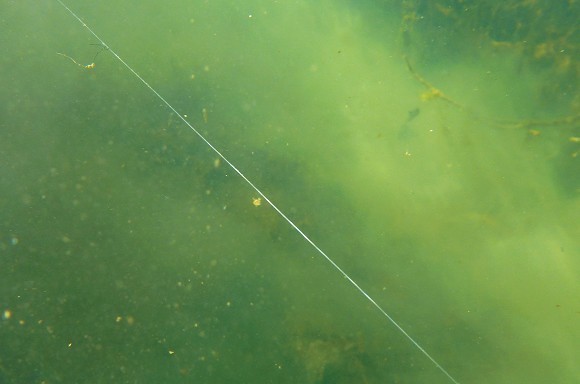
Is fluorocarbon invisible underwater?
Our subsurface angling specialist Rob Hughes investigates whether fluorocarbon is really invisible below the surface...
“I’m using fluorocarbon all the way through because it sinks like a brick and it is invisible underwater. The carp in here are spooky and I know that I need to get the line out of the way or risk spooking them so I have opted for a heavy sinking line like a fluoro because my bite indication is much better.”
If I had pound for every time I had heard this I would be a very rich man indeed. For a start, I’d like to say that fluorocarbon is NOT invisible underwater. It’s the same with red lines. People think they are invisible too and they aren’t. Flouro is a brilliant material for a number of reasons, but assuming that it is invisible is a recipe for disaster. It’s also a bit of a menace for casting and is very expensive to spool a whole reel up with. There are times when it can be an advantage as a main line, but also times when it can be a hindrance.
The first thing I would say about fluoro is that when it is pinned down onto the deck it is as close to invisible as you can get. The thinking behind fluoro is that it becomes invisible because light can pass through it very easily, and when it is on or very close to the bottom it is very difficult to see. Over clear gravel, Illusion, which is my favourite fluoro, is almost invisible, but as soon as it comes off the bottom it can be seen. Light passes into it and travels down it so a fluoro off the bottom is actually more visible that a nylon.
The other thing that we have to be very careful of is that, for some reason, fluorocarbon seems to attract dirt more than nylon. It’s almost like a dust magnet and even though you might look into a pool and think the water is crystal clear, there are loads of suspended particles hovering in the water that are quite hard to see. Give them something to cling on to and they become obvious, and they simply love fluoro.
Another advantage of using fluorocarbon is that it stretches slightly less than mono so you get contact with the fish a little better than with a standard nylon and it also sinks better. This can be an advantage or a disadvantage depending on the bottom that you are fishing over. If it’s totally clean then it will lie nicely along the bottom but if there is any amount of weed it can actually work its way into it and make picking up the line on the strike a little harder and it reduces indication sensitivity at the rod end. As with all angling situations it pays to think about where and how you are fishing and what you want to achieve. Flouro definitely has its uses, but it also has it’s restrictions as well.




